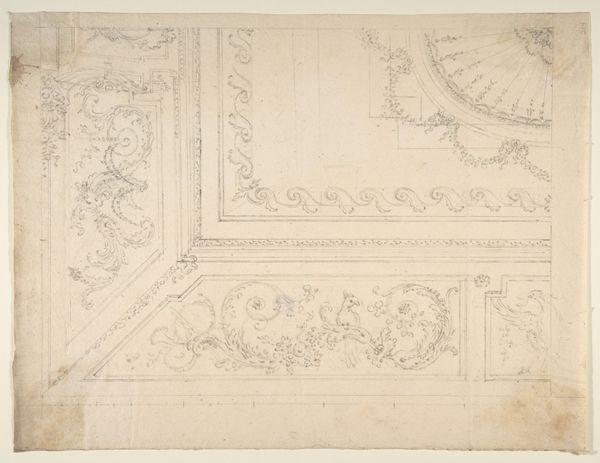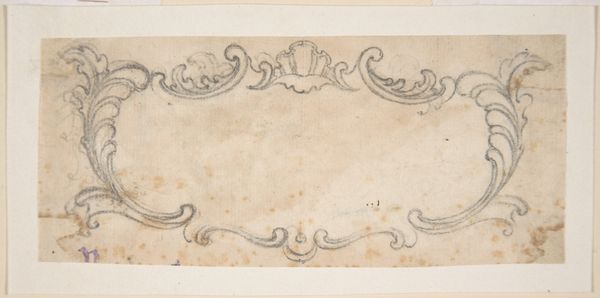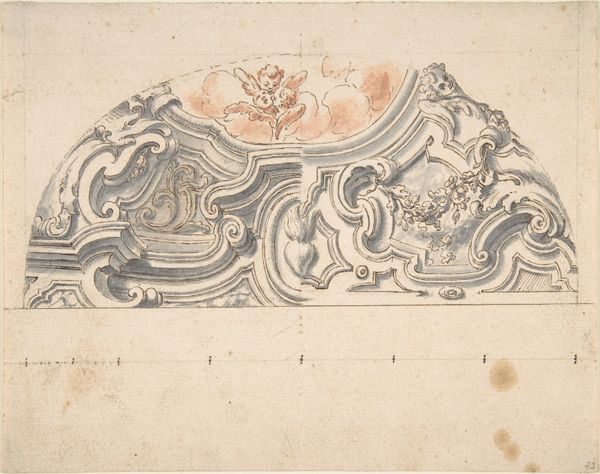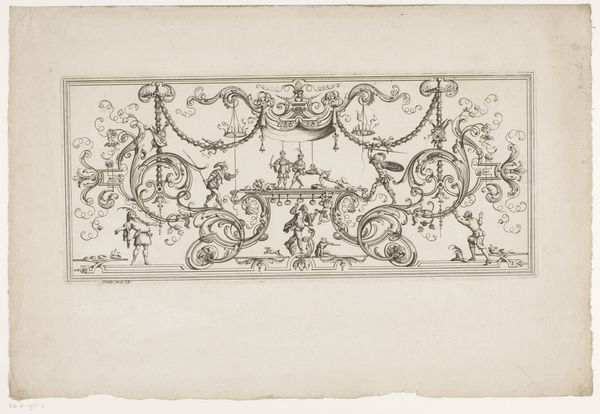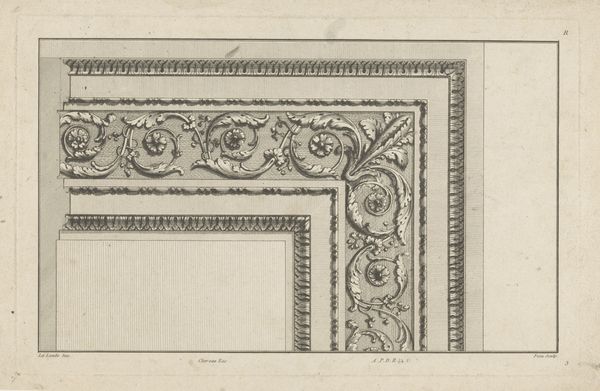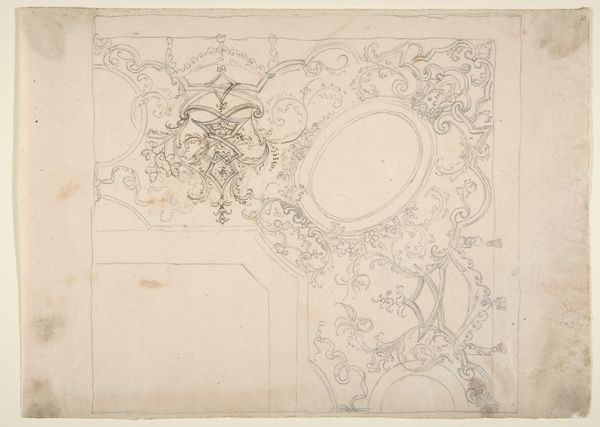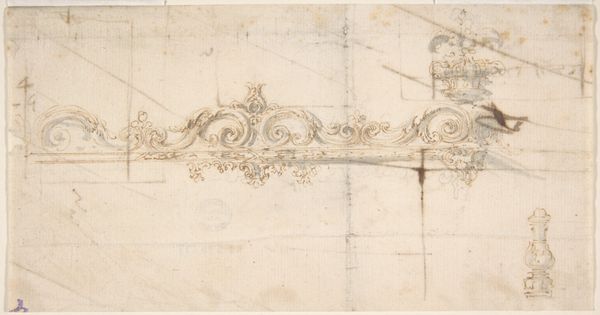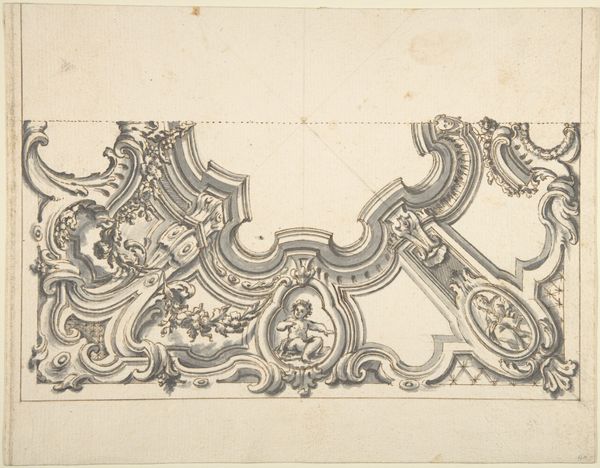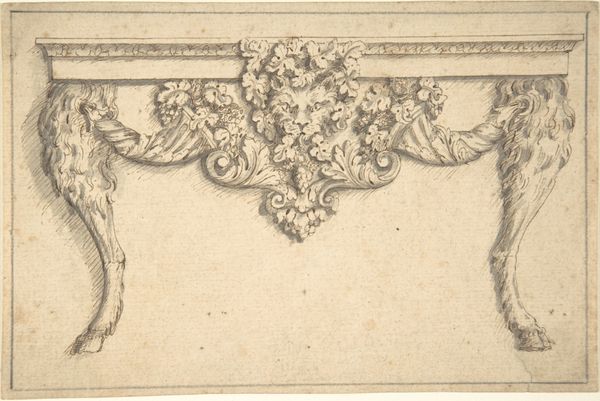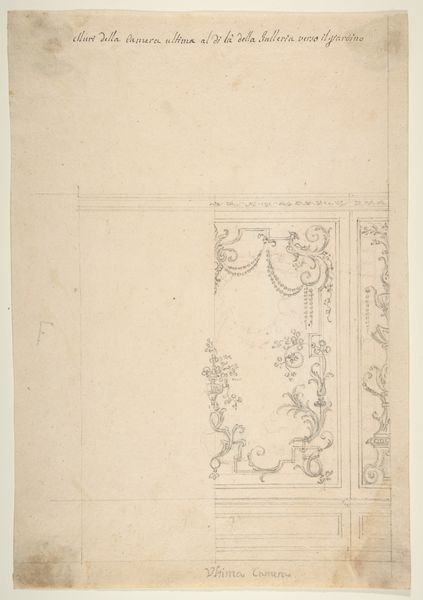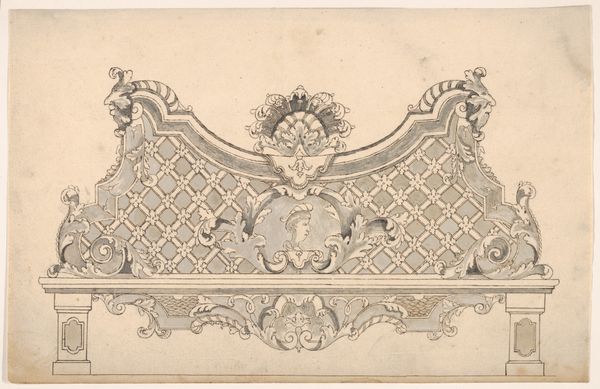
drawing, print, ink, pen
#
drawing
#
ink drawing
# print
#
pen sketch
#
ink
#
pen
Copyright: Public Domain
Curator: This intriguing piece is titled "Design for Banknote or Certificate," dating somewhere between 1830 and 1900, created by Robert William Hume. The media involved are ink, pen, and print on paper. It resides here at the Metropolitan Museum of Art. Editor: My immediate impression is how delicate and ornamental it seems. Almost like a calling card or something out of a Jane Austen novel. Curator: Exactly! The elaborate swirls and flourishes certainly speak to a specific cultural aesthetic. You see the remnants of classical motifs reworked for a Victorian-era financial instrument. These designs often spoke to stability, prosperity, and the trustworthiness of the issuing bank. Editor: So the symbols used would have been chosen very deliberately? It's interesting how something so overtly decorative is actually about conveying security. The symbolic weight must have reassured people back then. I also wonder how common such ornamental certificates or banknotes would have been, and if this would make them targets for forgery? Curator: Undoubtedly! Banknotes acted almost like miniature propaganda campaigns, so everything had meaning. As for forgeries, these design elements could offer levels of protection. The complexity becomes a barrier against duplication. It is clear how artists served both the marketplace and the culture in profound ways through the vehicles of such currency. The value is secured not just through denomination but also with potent social symbols of power and tradition. Editor: Looking at it with contemporary eyes, it almost feels like a comment on value itself – the contrast between genuine financial worth, or value that society bestows by its common symbols of governance and finance. Did these artistic considerations in currency have social ramifications – such as influencing economic outlook in the regions of distribution, influencing people through propaganda? Curator: Absolutely. The imagery has the potential to shape perceptions of wealth and governance. These beautiful artifacts provided a constant visual reminder of social hierarchy, commerce, and community belief. Now that, is impactful currency. Editor: Yes, what a strange artifact, a fragile little reminder that our idea of money has always been built on aesthetics as much as tangible assets. Curator: Precisely. Art, even in the most utilitarian of forms, tells a story of power, trust, and cultural ambition. It makes one look twice at that next twenty-dollar bill.
Comments
No comments
Be the first to comment and join the conversation on the ultimate creative platform.
